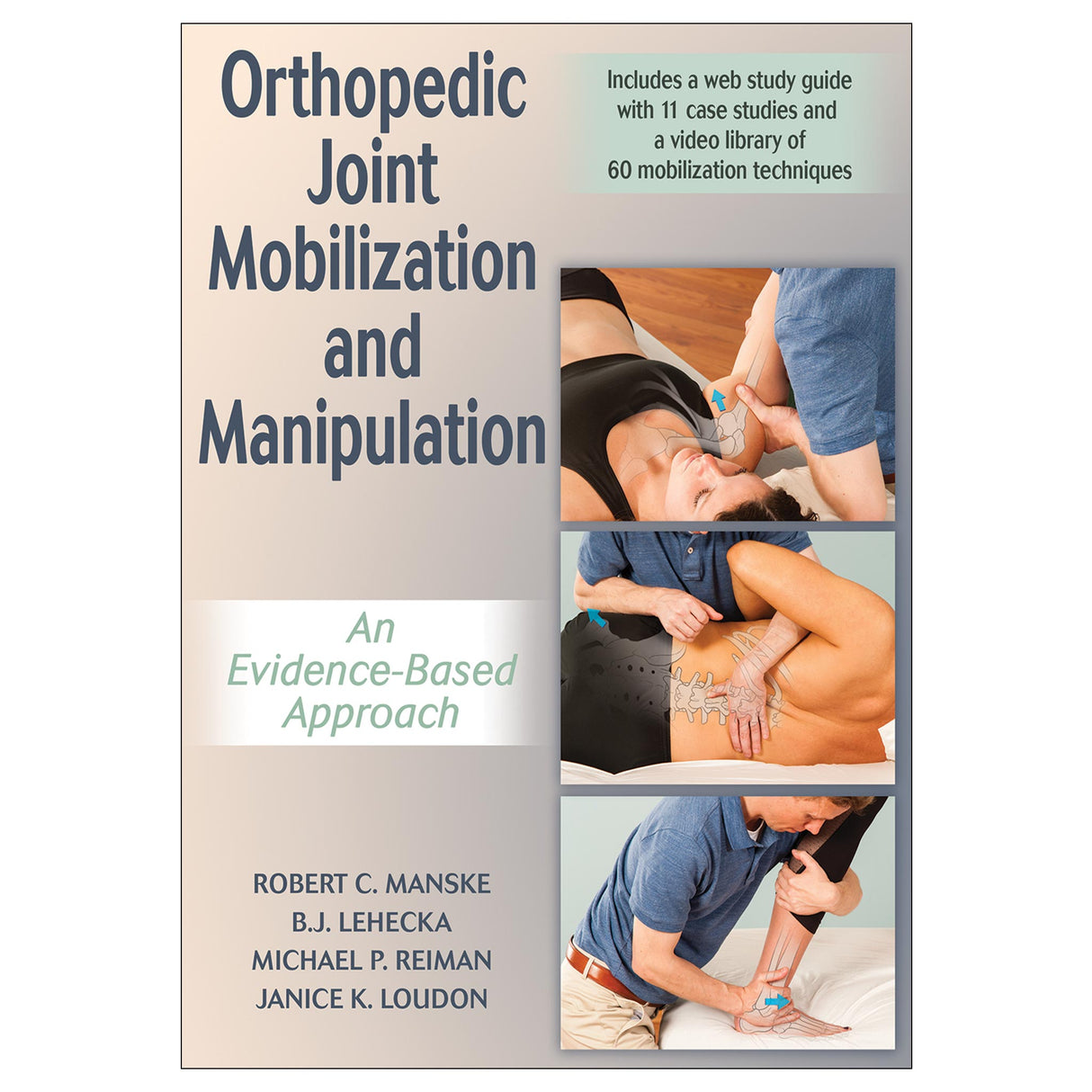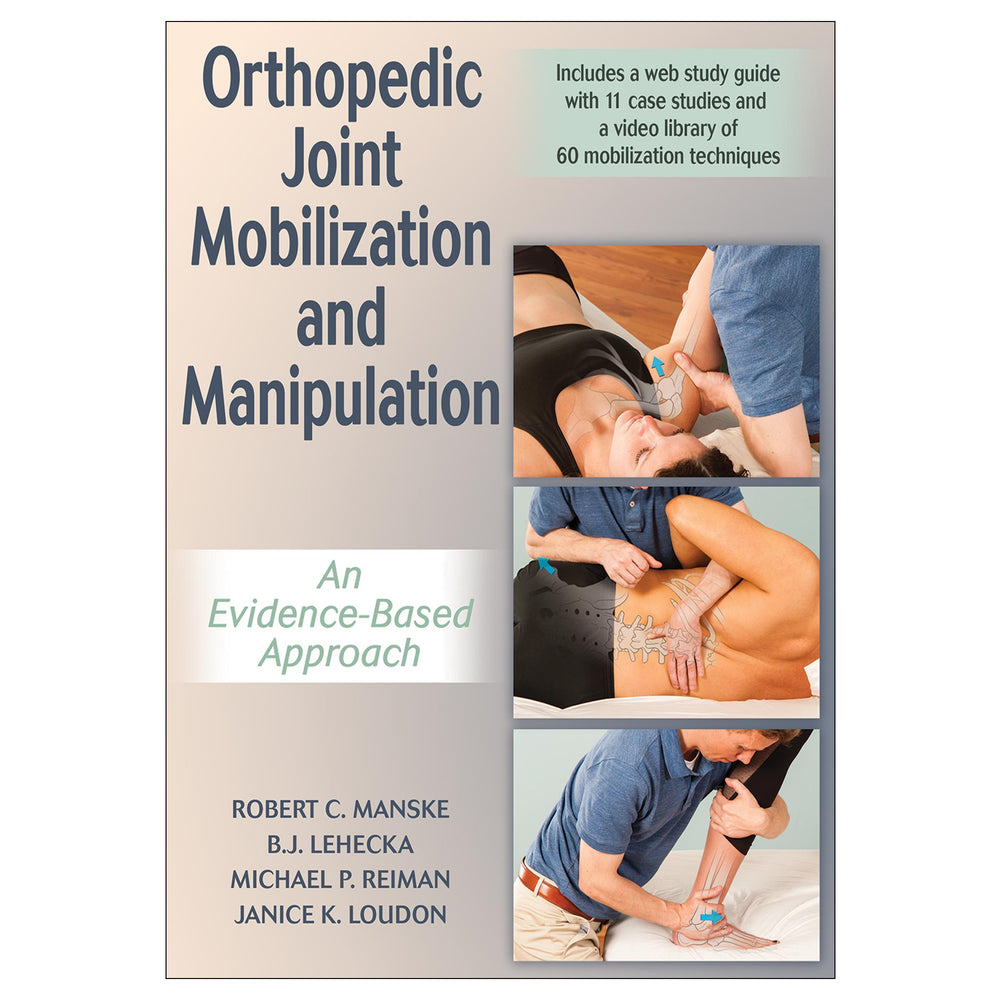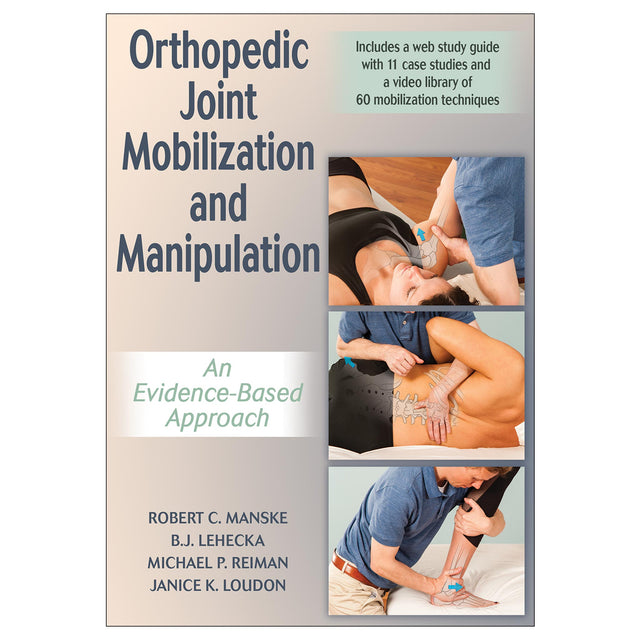Orthopedic Joint Mobilization and Manipulation With Web Study Guide
An Evidence-Based Approach
$138.95 CAD
Orthopedic Joint Mobilization and Manipulation: An Evidence-Based Approach With Web Study Guide is a guide to clinical applications that can provide relief for a wide range of musculoskeletal ailments related to pain, dysfunction, and limited joint mobility. Ideal for physical therapy and athletic training students and professionals, this comprehensive resource provides a clear understanding of how thrust and nonthrust techniques work to eliminate pain and re-establish normal joint motion and function.
The text presents a thorough overview of the literature supporting the use of joint mobilization, joint manipulation, and manual therapy, and it incorporates the concepts and theories with easy-to-apply clinical methods for treating common musculoskeletal conditions. To bridge the gap between research and practice, readers will find an array of exceptional learning aids:
• Videos demonstrating proper procedures for 60 techniques
• A web study guide featuring 11 interactive case studies with questions regarding the proper treatment protocols
• Anatomical artwork overlaid on technique photos to show underlying bones, and directional arrows on the photos to guide hand placement and indicate thrust direction
• Technique guidelines, organized by body region, that address client and clinician positioning, stabilization, mobilization, and objectives
• Tables for each body region that use research evidence to compare outcomes of various interventions
• Clinical Tips sidebars offering insight and understanding into the why and how of techniques
Orthopedic Joint Mobilization and Manipulation is organized in four parts. Part I introduces the science behind joint mobilization and manipulation, including general joint kinesiology, evidence for joint mobilization, and general application guidelines. Parts II through IV then present mobilization and manipulation techniques for specific body regions of the craniomandibular complex and spine, the upper extremity, and the lower extremity.
A treatment finder at the front of the text allows readers to easily find techniques by body region. Each technique is presented in a consistent approach that addresses client and clinician positioning, stabilization, mobilization, and objective. Extensive medical illustrations provide strong visual cues. Tables containing evidence for manual therapy as well as charts on joint arthrology are included. At the end of the text is an appendix housing 26 self-mobilization techniques, along with photos, that clients can do on their own.
In addition to the learning aids, instructors will find helpful tools for teaching a course. The instructor guide features a sample syllabus, suggested laboratory activities, and class projects. A set of chapter quizzes offers 10 questions per chapter that can be used to track student progress and comprehension.
Orthopedic Joint Mobilization and Manipulation is an indispensable resource offering a variety of thrust and nonthrust techniques to relieve pain and restore normal joint function. Supported with research, this versatile text is ideal for use in classrooms, labs, clinics, and professional settings.
Audience
Graduate-level text for physical therapy and athletic training curriculums with courses in manual therapy, joint mobilization, therapeutic intervention, therapeutic modalities, or therapeutic exercise. Reference for researchers and libraries.
Part I. Introduction
Chapter 1. Basic Science Behind Joint Mobilization and Manipulation
History and Legislation
Mobilization and Manipulation
Joint Congruency and Position
Joint Movements
Convex and Concave Rules
Effects of Mobilization and Manipulation
Evidence for Joint Mobilization
Summary
Chapter 2. General Application Guidelines
General Examination
End-Feels
Capsular Patterns
Clinical Application of Joint Thrusts and Nonthrusts
Safety and Risk of Injury
Contraindications and Precautions for Thrust and Nonthrust Techniques
Summary
Part II. Mobilization and Manipulation of the Craniomandibular Complex and Spine
Chapter 3. Temporomandibular Joint
Anatomy
Joint Kinematics
Treatment Techniques
Chapter 4. Cervical Spine
Anatomy
Joint Kinematics
Treatment Techniques
Chapter 5. Thoracic Spine
Anatomy
Joint Kinematics
Treatment Techniques
Chapter 6. Lumbar Spine and Pelvis
Anatomy
Joint Kinematics
Treatment Techniques
Part III. Mobilization and Manipulation of the Upper Extremity
Chapter 7. Shoulder Joint
Anatomy
Joint Kinematics
Treatment Techniques
Chapter 8. Elbow Joint
Anatomy
Joint Kinematics
Treatment Techniques
Chapter 9. Wrist and Hand
Anatomy
Joint Kinematics
Treatment Techniques
Part IV. Mobilization and Manipulation of the Lower Extremity
Chapter 10. Hip Joint
Anatomy
Joint Kinematics
Treatment Techniques
Chapter 11. Knee Joint
Anatomy
Joint Kinematics
Treatment Techniques
Chapter 12. Ankle Joint
Anatomy
Joint Kinematics
Treatment Techniques
Chapter 13. Foot
Anatomy
Joint Kinematics
Treatment Techniques
Instructor guide. Features a sample syllabus, suggested laboratory activities, and class projects.
Chapter quizzes. Includes 10 questions per chapter that can be used to track student progress and comprehension.
Web study guide with online video. Contains video clips for 60 techniques and 11 interactive case studies with questions regarding proper treatment protocols. Instant feedback is provided when the case study questions are answered.







